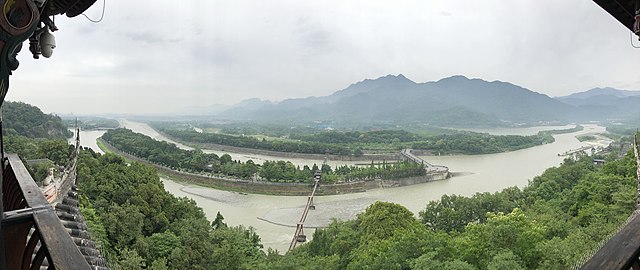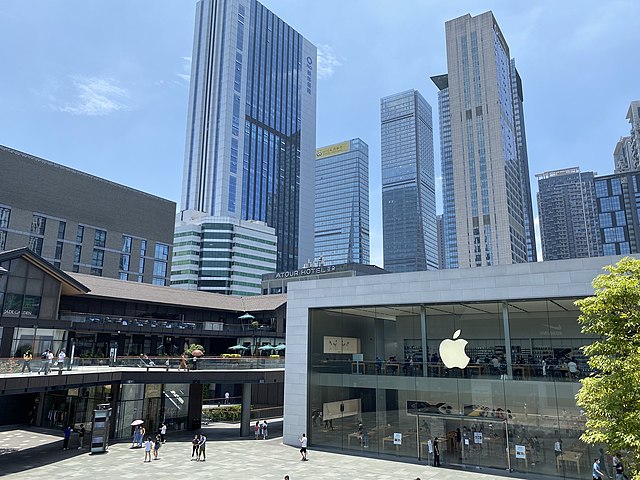The Sichuan Basin, formerly transliterated as the Szechwan Basin, sometimes called the Red Basin, is a lowland region in southwestern China. It is surrounded by mountains on all sides and is drained by the upper Yangtze River and its tributaries. The basin is anchored by Chengdu, the capital of Sichuan province, in the west, and the direct-administered municipality of Chongqing in the east. Due to its relative flatness and fertile soils, it is able to support a population of more than 100 million. In addition to being a dominant geographical feature of the region, the Sichuan Basin also constitutes a cultural sphere that is distinguished by its own unique customs, cuisine and dialects. It is famous for its rice cultivation and is often considered the breadbasket of China. In the 21st century its industrial base is expanding with growth in the high-tech, aerospace, and petroleum industries.
Sichuan Basin landscape in Zitong County
Haze forming within the Sichuan Basin, with the Daxue Mountains to the west
Evergreen broadleaf forests on Mount Emei
The 2000-year-old Dujiangyan irrigation project
Chengdu is the capital city of the Chinese province of Sichuan. With a population of 20,937,757 at the 2020 Census, it is the fourth most populous city in China, and it is the only city with a population of over 20 million apart from direct-administered municipalities. It is traditionally the hub of Western China.
Image: 雪山下的成都市天际线 Chengdu skyline with snow capped mountains
Image: Sino Ocean Taikoo Li
Image: Tianfu Financial Center 2
Image: 成都大熊猫繁育研究基地 panoramio (7)








